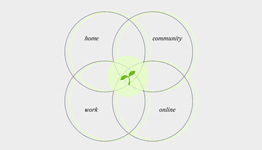Sublime
An inspiration engine for ideas
-Starting a public library, studio, or event space
Nadia Asparouhova • 27: Friend groups
And there was something else to look at what urban planner William White calls triangulation. You don't have to directly engage with other people who are here. You can both be looking at the fire. You're having a nice time. You're warm, you're feeling good. And over the course of sitting for a while, there's opportunity to strike up a conversation... See more
Eli Pariser • How Urban Planning Could Help Build Better Online Spaces | On the Media | WNYC Studios
Fourth Spaces
protein.xyz
Or consider the line drawn by Mr. Jaffe at the candy store around our corner—a line so well understood by his customers and by other storekeepers too that they can spend their whole lives in its presence and never think about it consciously. One ordinary morning last winter, Mr. Jaffe, whose formal business name is Bernie, and his wife, whose
... See moreJane Jacobs • The Death and Life of Great American Cities

Whenever you go to a place where people know and like you, you open yourself to others who are there.
Ray Oldenburg • Celebrating the Third Place: Inspiring Stories About the Great Good Places at the Heart of Our Communities
these days, the art of hanging out seems to be waning in cities.
Allie Conti • We Really Should Hang Out More Often
“a living room for the city,”
